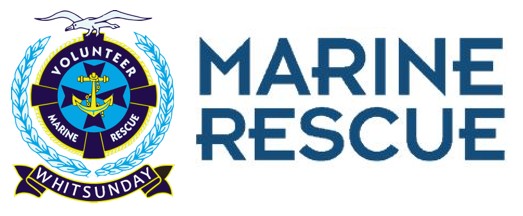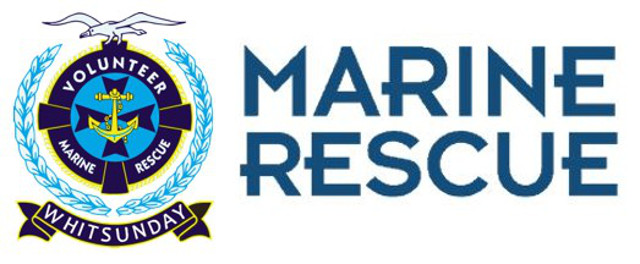
We recommend the Whitsunday National Parks Brochure as it contains lots of useful information including maps, walking tracks, things to do and places to see.
Download the brochureWe recommend the book ‘100 Magic Miles’ by David Colfelt. This book is full of local knowledge including bays and anchorages. Use it to help plan your trip.
Purchase the bookWhen heading out on weekends or public holidays (7am – 5pm), log on/off with our radio operator.
At all other times make sure you tell someone where you are going, and when you are due back.
It might just save your life.
Boating Safety and Awareness
 VMR Whitsunday (call sign “VMR442”) can be contacted on VHF Channels 06, 16, 67, 81 or 82 or by phone on (07) 4946 7207.
VMR Whitsunday (call sign “VMR442”) can be contacted on VHF Channels 06, 16, 67, 81 or 82 or by phone on (07) 4946 7207.
The VMR radio base operates a dedicated listening watch each weekend and on public holidays between 7 am and 5pm. Phone calls outside of these hours are forwarded to a 24/7 emergency phone holder. Additionally VMR Whitsunday operates in co-operation with VMR Mackay and Whitsunday VTS (Vessel Tracking System) to monitor a 24/7 emergency listening watch on channels 16 and 67. Please note that we do not monitor HF frequencies.
Check out the map of our OPERATION ZONE before you head out.
Remember, VMR membership is cheap insurance for when the unexpected happens, so make sure you join as a member before you head out (at least 24 hrs prior).
 The key to safety in a small boat is PREPARATION. Always do all your normal pre-departure checks before leaving home and again before leaving the boat ramp.
The key to safety in a small boat is PREPARATION. Always do all your normal pre-departure checks before leaving home and again before leaving the boat ramp.
If you are towing a trailer any distance you will need to have the trailer tyres (treads and pressures) and wheel bearings checked. Don’t just walk round and give the wheels a kick. Ensure that the trailer lights work correctly and rig a tarp or net over the boat to keep everything safely inside the boat.
Clean out the fuel tank/s, filters and lines and fill with fresh fuel. Get the engine serviced; double check the batteries and connections. Carry at least basic spares and tools, and the knowledge to use them.
Especially check your normal safety gear (EPIRB, flares, life jackets etc). Check the Marine Safety Queensland (MSQ) website if you are not sure what is required, click here – MSQ Safety Gear Guide. MSQ refers to “partially smooth waters”. In the Whitsundays this includes the area from Bowen in the north to south of Midge Point (and generally one nautical mile beyond the main islands). A Partially Smooth Waters map is available for download.
For information on safety equipment and licensing regulations you are advised to check with Maritime Safety Queensland for up to date and accurate information.
 Make sure your anchor and rope is in good condition. We recommend at least double the boat length of chain before the rope and remember that coral and rope don’t get on very well. You will need to use a scope of at least 4:1.
Make sure your anchor and rope is in good condition. We recommend at least double the boat length of chain before the rope and remember that coral and rope don’t get on very well. You will need to use a scope of at least 4:1.
Never, Never, Never, underestimate your fuel consumption. Take as an absolute minimum, 25% extra, 50% would be safer, and take it every trip. Always fill your tanks before you leave.
If you are sailing. The wind can kick up to 25 knots (15-25 knots is common during the day) so make sure you can reef in a hurry if needed. A combination of brisk breezes and a short chop whilst sailing to windward will test shrouds, sails, halyards and deck fittings, particularly if you and your boat are more accustomed to lighter weather. Whilst you are checking, look at your keel fittings and hinge points as well.
Think about rigging a sun protection awning over the boat if you don’t have one. The sun can be a weapon on a clear day. Don’t forget to Slip Slop Slap. Take lots of fresh water whenever you go to sea and food if you are out for a few hours. Don’t forget to cater for emergencies.
 From our experience we recommend that anyone travelling the Whitsundays Islands without a correctly fitted and tested VHF radio is running a risk. You will also need an operator’s license to stay legal and understand the correct voice procedures and protocols. Whilst not perfect, a good quality hand held 5W VHF is better than nothing. Note that 27meg is rarely used in the Whitsundays because of poor reception and is not monitored by VMR.
From our experience we recommend that anyone travelling the Whitsundays Islands without a correctly fitted and tested VHF radio is running a risk. You will also need an operator’s license to stay legal and understand the correct voice procedures and protocols. Whilst not perfect, a good quality hand held 5W VHF is better than nothing. Note that 27meg is rarely used in the Whitsundays because of poor reception and is not monitored by VMR.
During the day all the Charter Boat Operators and Commercial boats are listening on channels 81, 82 and 86 so you can be only a radio call away from assistance. Mobile phones have limited use. Depending on your supplier, they may not work at all in this area and only Satellite Phones will work on the Eastern side of the islands.
Even if you are able to get through by phone, only the person you are calling will know you have a problem. A radio call on the other hand, tells everyone in the area that you have a problem. There could be help from another boat only 5 minutes away.
More information about radio is available on the Where we Operate page.

A good steering compass, charts and plotting equipment is important for basic navigation. It is crucial to know where you are going and, if you need help, it will be essential to give rescuers an accurate position. “Somewhere in between Airlie Beach and Hayman Island” isn’t helpful…we really need a Latitude and Longitude. We have often gone to a position given by a stranded boat only to find they are in fact several miles away!
A GPS is a very good idea. Even a cheap hand held one will give an accurate position that you, or we, can work from. A smart phone with a Navigation app. can give a position but remember that navigation mode uses a lot of power so keep the phone charged.
If you have a plotter, ensure that you understand the difference between “Boat Position” and “Cursor Position” We have spent numerous hours looking for boats that gave us a “Cursor Position” which was in fact miles from their “Boat Position”. 🙂
 Tide Tables are essential for your passage planning (every time you go out).
Tide Tables are essential for your passage planning (every time you go out).
In the Whitsundays the tide range can be significant and the Tide Floods South and Ebbs North. The tide range can be as much as 4.2 metres during king tides. When there is a large tide range the tide current can run at 3 knots in the main channels and double that in narrow sections and near some headlands.
Shute Harbour is the nearest tide reference point and you can find tide information on the BOM site which includes yearly tide tables to download.
If you have a wind against tide situation e.g. big flooding tide against a solid South East wind, the seas can build rapidly in the channels and be potentially dangerous to a small, open boat. Read up on how to handle choppy seas in a small boat so you don’t get swamped. Always check the tides and never guess or assume.
The rule of twelfths and “Tide Bell Curves” can help you to estimate tide heights and times during a tide.
Many of our beaches have fringing reef off them. If you plan to beach your boat it is essential to ensure there is enough water depth to cross the coral safely as there is a substantial fine for damaging coral. Most smallish tinnies need at least 1.5m above a zero tide (LAT) to clear the coral safely.
Please note that the Local Council does NOT permit dinghies coming on to the town’s waterfront beaches – when coming ashore with a tender, head for either the public jetty at the Marine Club, or to the public jetty at Coral Sea Marina.
The rule of twelfths and “Tide Bell Curves” can help you to estimate tide heights and times during a tide.
 As shown on the wind roses, the predominant wind direction in our area comes from the S.E. quarter. The roses show annual average wind speed and direction at 3pm and 9am.
As shown on the wind roses, the predominant wind direction in our area comes from the S.E. quarter. The roses show annual average wind speed and direction at 3pm and 9am.
Check the BOM site for the averages for the dates you will be here. It is often said we don’t have a wind forecast, we have a recording. 😁 Having said that, even though our weather is relatively stable it would be irresponsible to become complacent and forget to check the weather before leaving port, every time.
The Charter boat Operators read out the latest weather forecast in the morning and afternoon, every day, on VHF Channels 81 and 82.
The Cyclone season is probably not a general boating concern as it’s very rare that we don’t get at least 5 days’ notice. However when a cyclone warning has been declared, it is important to follow the guidelines for preparation outlined in Severe Weather and Cyclones.
Weather Forecasts
For up to date weather in the Whitsunday region we recommend visiting the following websites
Qld Weather and Warnings – Bureau of Meteorology
QLD Weather Radar – Bureau of Meteorology
Current Observations – Bureau of Meteorology
Detailed Landbased Weather – Elders Weather



